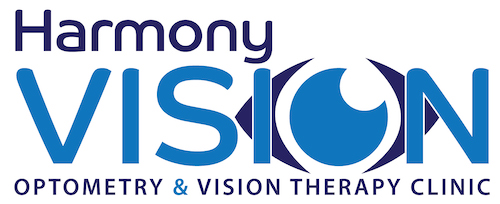Poor Focus, Losing Concentration, Easily Distracted – This Can Be a Sign of a Vision Problem
Vision Problems Can Interfere with Learning, But Can Go Undetected.
It would be fair to say that if you asked people what they thought the signs of a vision problem were, they’d most likely answer something similar to;
- blurry vision,
- seeing double,
- difficulties reading,
- can’t see the board
- getting close to the TV.
Less common answers might include;
- tripping over
- bumping into things
- poor eye-hand co-ordination
- difficulties with “tracking”
Undiagnosed vision problems can cause problems with concentration and attention during reading, spelling and writing, despite a person having “clear” or “perfect” sight. Often a child’s performance is a greater indicator of vision problems than anything they might complain of1.
In our experience, children won’t complain of blur, double vision, headaches or sore eyes for a number of reasons;
- If they avoid work, then eye-related symptoms don’t occur
- The symptoms only occur during schoolwork and so they don’t remember to mention them at home
- They may think it’s normal or don’t know how to describe what’s happening.
Parental concerns can be a good tool for identifying vision problems in children, and has been used extensively in the most recent vision training research.
7 Common Signs of Undetected Vision Problems2,3.
- Does your child have difficulty completing schoolwork or homework?
- Does your child avoid or say he/she does not want to do tasks that require reading or close work?
- Does your child make “silly” mistakes or fails to pay attention to detail?
- Is your child easily distracted during reading or close work?
- Are you concerned about your child’s school performance?
- Does your child show signs of visual discomfort eg afternoon headaches, sore eyes, eye-rubbing, blinking, squinting or getting close to TV or page?
- Does your child lose their place when reading or copying, and/or read more slowly than expected?
Performance issues can be caused by convergence and accommodation problems, also known more generally as eye-teaming and focusing problems. These are visual dysfunctions that do not usually cause sight problems, so children will read a letter chart with minimal difficulty. Specific testing is required to detect and diagnose these issues so they can be treated. It is important to understand that there is not one single test that helps identify these issues; instead a battery of tests is required.
Some children will continue to engage in close tasks despite visual discomfort, but for others it can have a large impact on their ability to attend and concentrate on close work. Frustration, avoidance and reduced self-esteem may follow. Avoidance of close work can become a habit because the child associates close work with negative symptoms or feelings.
What Can Be Done? – Treating Visual Dysfunction
Research into the visual dysfunction convergence insufficiency has demonstrated that attention symptoms, visual discomfort symptoms and performance symptoms improve with treatment. Treatment might include vision training, a series of eye activities designed to help the person learn to control their focusing and eye-teaming better. Office based or clinic based vision training is considered the most effective form of vision training. It involves one on one training, almost like personal tuition for the eyes.
1. Barnhardt, C., Cotter, S.A., Mitchell, G.L., Scheiman, M., Kulp, M.T., 2012. Symptoms in Children with Convergence Insufficiency: Before and After Treatment. Optometry & Vision Science 89, 1512–1520.
2. Borsting, E., Mitchell, G.L., Kulp, M.T., Scheiman, M., Amster, D.M., Cotter, S., Coulter, R.A., Fecho, G., Gallaway, M.F., Granet, D., 2012. Improvement in Academic Behaviors Following Successful Treatment of Convergence Insufficiency. Optometry and Vision Science 89, 12-18.
3. Borsting, E.J., Rouse, M.W., Mitchell, G.L., Scheiman, M., Cotter, S.A., Cooper, J., Kulp, M.T., London, R., 2003. Validity and reliability of the revised convergence insufficiency symptom survey in children aged 9 to 18 years. Optometry & Vision Science 80, 832–838.
